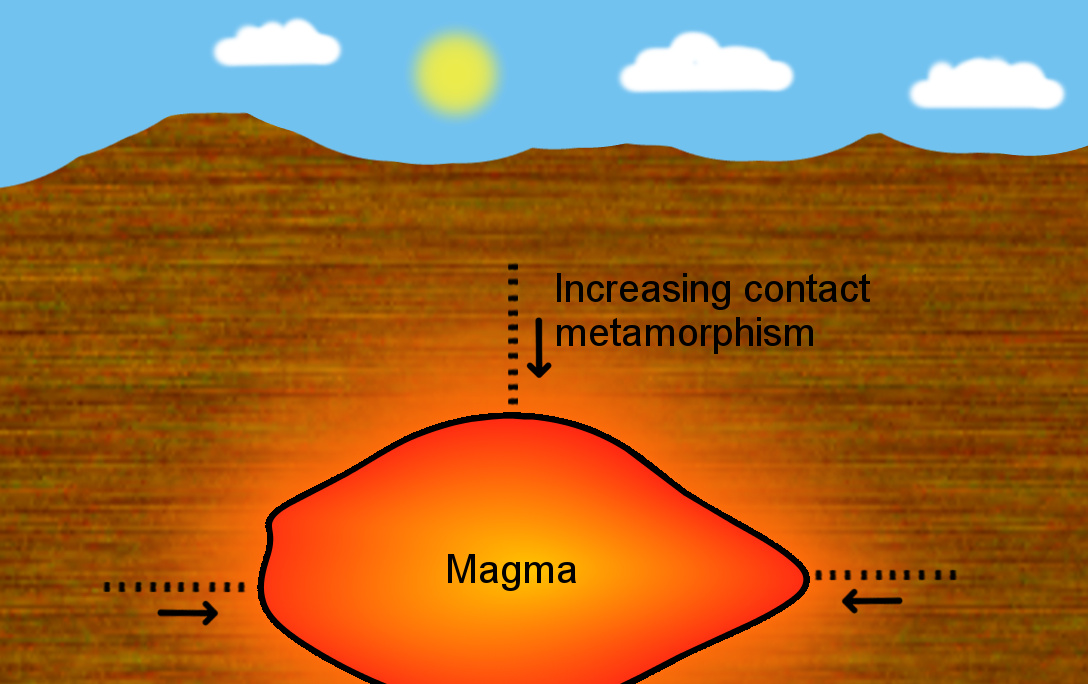6.5 Metamorphic Environments
Environments of Metamorphism
As we learned in the Sedimentary Rocks lab, rocks don’t just happen randomly–they are formed under certain environmental conditions. This is important because when a geologist sees a certain rock in nature, he or she will be able to interpret the environment that once existed long ago that formed that rock. So what type of environments lead to the formation of metamorphic rocks?
We know that certain elevated temperatures and/or pressures can cause igneous, sedimentary, and other metamorphic rocks to be reprocessed into brand new metamorphic rocks! Where can we find these environments, and how are they different from one another?
Contact Metamorphism (Volcanic Intrusions)

Remember magma? These are masses of magma, called igneous intrusions, that invade layers and bodies of rock that have already been deposited. Really large intrusions are called batholiths, whereas the small branches of magma that intrude across layers of rock are called dikes. The ones that move horizontally along a layer are called sills.
When magma comes into contact with this preexisting rock, it causes the rock to change form, i.e., metamorphose. The conditions of this metamorphic environment are High Temperature, but Low Pressure. The type of rock that may form from this environment includes marble and quartzite.
Regional Metamorphism (Orogenic Metamorphism)

Regional Metamorphism is a bit of an umbrella term because it refers to any type of metamorphism that occurs over a big area. Because of this broad definition, this is easily the most common form of metamorphism. Instead, let’s focus on the type of Regional Metamorphism most people tend to immediately think of–Orogenic Metamorphism. This type of environment typically occurs near convergent boundaries where mountain ranges are being built–think of the Himalayan Mountains. There is a massive amount of both temperature and pressure placed on the original material in these regions because a lot of change in the rocks is occurring up to 20 km beneath the surface! So High Temperature + High Pressure is going to give us anywhere from low to high-grade metamorphic rocks.
Burial Metamorphism
When there is an increasing amount of sedimentary layers being deposited in a region, the rock on the bottom layers is becoming more and more squeezed by the overlying weight. This is burial metamorphism. Keep in mind that this tends to occur at relatively shallow depths, but not always. The more overlying rock layers there are, the higher the temperature and pressures become! While this is technically a type of Regional Metamorphism, it is important to remember that this process results in low-grade to high-grade metamorphic rocks.
Let’s Review!
Consider what you have just read and assign each of the rocks you just identified to a metamorphic environment.

